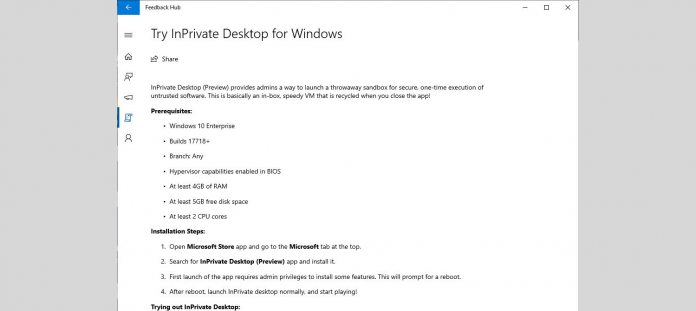At its core, InPrivate Desktop will provide Windows 10 with a secure sandboxed environment. For organizations, this means they can execute third-party programs in a walled off safe area of the OS. This will be a major addition to the cybersecurity arsenal of companies. Running programs from third-parties is among the common ways businesses are duped into downloading malware. Attackers install malicious content on program files that otherwise seem legitimate. With Windows 10 InPrivate Desktop, organizations will be able to open untrusted or unknown programs in a sandbox. The feature was found in preview form on a Windows 10 Insider Feedback Hub quest. An accompanying description says InPrivate will act as “throwaway sandbox for secure, one-time execution of untrusted software.”
Details
Essentially, each time a user wants to execute a program and is unsure of its origin or content, they can run it in InPrivate. When the feature is used, a new individual sandbox is opened. According to the Feedback Hub blurb, the feature will be exclusive to Windows 10 Enterprise from build 17718 and above. It seems InPrivate Desktop will also have hardware requirements, namely a minimum of 2 CPU core, 4GB of RAM, 5GB of disk space, and hypervisor capabilities enabled in the BIOS. Microsoft has yet to go official with this feature, but it is certainly an exciting addition to the Windows 10 experience. However, we doubt the sandbox will be ready for Windows 10 Redstone 5 (October 2018 Update), which launches soon. Instead, we guess the H1 2019 Windows 10 release is a likelier bet.




